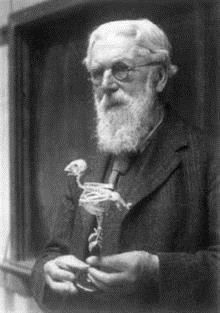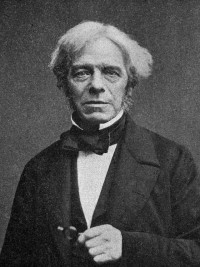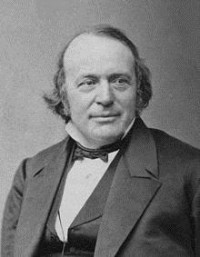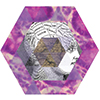D’Arcy Wentworth Thompson (1860-1948) was a Scottish biologist, and a gifted mathematician, naturalist and classical scholar. His publications numbered in the region of 300, but he is principally remembered for his book On Growth And Form. First published in 1917, subsequently Thompson heavily revised the book, with the second edition appearing in 1942 and weighing in at over 1000 pages. This landmark publication adopted a unique approach to the study of life by using mathematics and physics to explain biological processes. As Thompson (1942, p.10) explained:
“Cell and tissue, shell and bone, leaf and flower, are so many portions of matter, and it is in obedience to the laws of physics that their particles have been moved, moulded and conformed.”
The book also pioneered the study of morphogenesis; the biological process by which organisms take their shape. Along with cellular differentiation and cell growth, morphogenesis is one of the three fundamental aspects of developmental biology.
As pointed out by Ball (2013), On Growth and Form was a reaction against the first flush of Darwinism, a time when many scientists considered natural selection to be adequate to account for every feature of life. Although Thompson did not challenge the importance of natural selection, he viewed evolution from an engineering perspective, insisting that physics imposes constraints on biological form. Thompson pointed out that biological form is a dynamic relationship between individual entities within an organism and that there are physical limitations to its growth and structure. For example, in very general terms, in order for larger animals to support themselves they must have legs proportional to their size; this is basic physics.
Another more specific example is the spiral arrangement found in numerous plants and animals, from the petals of a flower…

The head of a Yellow Camomile flower showing consecutive Fibonacci numbers in an arrangement of 21 (blue) and 13 (aqua) spirals (Image: Wikimedia Commons)
…to the cluster of spines in a cactus…
…and the spirals of Nautilus...
Such examples are a strong hint that in some way mathematical principles underlie at least some aspects of biology. Indeed it is becoming increasingly clear that self-organisation plays an important role in the emergence of body-form. While examples such as logarithmic spirals in plants and animals attract attention, examples of self-organisation are now being identified at many scales, including specific organs (e.g. gut) and single cells, as in the beautiful siliceous tests of diatoms.
This emphatically is not meant to suggest that principles of self-organisation are making Darwinian ideas redundant. They are not, rather they are complimentary. So, natural selection plays a role, but it is not solely determining morphology. Rather, morphology is constrained by physical parameters. To illustrate his point further, Thompson demonstrated how mathematical functions could be applied to pictures of one organism in order to transform it into another. For example, by plotting the equivalent points on a picture of a chimpanzee skull, he showed how it could be morphed into that of a baboon skull (and vice versa).
Similarly, he showed how one species of fish could be transformed into another. In neither of these cases is it necessary to argue that this is how evolution actually proceeded. Rather, it is to demonstrate that what appear to be radically different shapes can arise by ‘accelerating’ or ‘retarding’ areas of growth. The fact that such grids are also highly organized is an indication of how mathematics might be as applicable as biology. Thompson’s idea that physics influences biological form now constitutes one of the conceptual pillars of biology.
On Growth and Form presented the academic world with food for thought, encouraging scientists to employ new techniques to investigate evolution, identify new questions and develop interdisciplinary ways of looking at them. In many ways, Thompson’s seminal work was the wrecking ball to the once seemingly impenetrable barriers between disciplines as specialised as physics and biology. When it comes to the study of evolution, no single scientific discipline has all the answers, but each has something different to bring to the table and all are intricately connected. Thompson’s work was well-received by the scientific community at the time in which it was published and continues to be held in extremely high regard today. Nevertheless, one might argue that in some ways Thompson is still the ghost at the Darwinian banquet and a real integration of these approaches still lies in the future.
Thompson had a remarkable and inquisitive mind. He was an extremely competent classicist, translated Aristotle and had both a passionate gift for teaching and a stylish flourish to his writing that made his work a pleasure to read. His work provides a quintessential example of how seemingly disparate disciplines can be combined to develop novel approaches to understanding evolution. On Growth and Form established the field of biomathematics and made an enduring contribution to numerous other disciplines, including palaeontology, embryology, zoology, botany, and ecology.
Text copyright © 2015 Victoria Ling. All rights reserved.
References
Arthur, W. (2006) D’Arcy Thompson and the theory of transformations. Nature Review Genetics 7, 401-406.
Ball, P. (2013) In retrospect: on growth and form. Nature 494, 32-33.
Gould, S.J. (1971) D'Arcy Thompson and the science of form. New Literary History 2, 229-258.
Newman, J.R. (1956) Commentary on D’Arcy Wentworth Thompson. In The World of Mathematics, Volume 2 (J.R. Newman, ed.), pp. 996-1000. Allen and Unwin.
Thompson, D.W. (1942) On Growth and Form. Cambridge University Press.
Thompson, R. D. (1958) D’Arcy Wentworth Thompson: The Scholar-Naturalist. Oxford University Press.
D’Arcy Wentworth Thompson: Celebrating 150 years since the birth of D’Arcy Thompson. University of Dundee, University of Aberdeen, Royal Society. (Accessed 10.02.2014)









